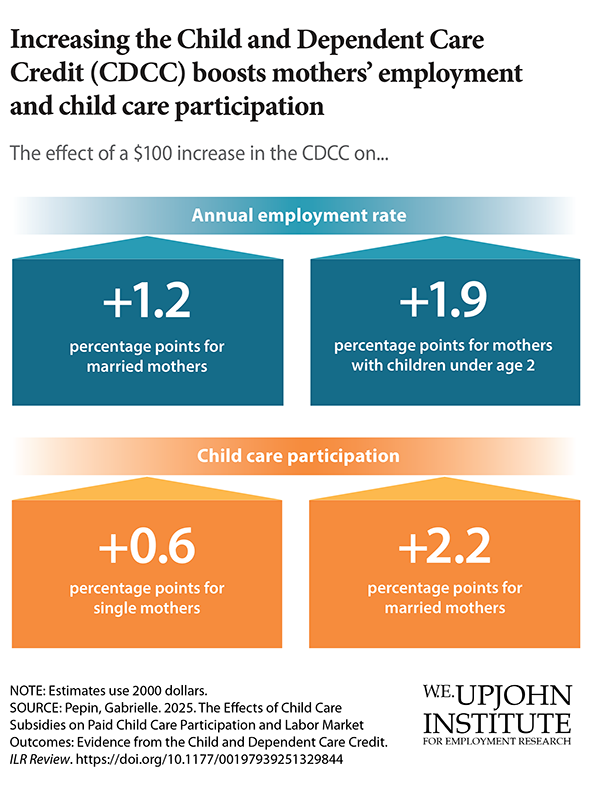New research from the W.E. Upjohn Institute highlights the significant role tax credits play in alleviating child care costs and their impact on parental employment, particularly among mothers. The study focuses on the Child and Dependent Care Credit (CDCC), a U.S. federal tax provision that subsidizes child care expenses for working families with children under 13 years old.
Child care remains a major expense in the U.S., with median child care prices ranging from 8–19% of median family income as of 2018. High costs can force parents— particularly mothers—out of the labor market or into informal, lower-quality care options. To mitigate this, the CDCC provides a tax credit proportional to child care expenses, though it is nonrefundable, meaning families must owe taxes to benefit.
The research, by the Institute’s Gabrielle Pepin, shows that a $100 increase in CDCC generosity increases paid child care participation by 0.6 percentage points among single mothers and 2.2 percentage points among married mothers. This suggests that more generous credits encourage families to utilize formal child care options.

Additionally, CDCC increases were linked to higher employment rates, particularly among married mothers. For instance, the study found a $100 increase in benefits leads to a 1.2 percentage point, or 1.7%, increase in annual employment and a $541, or 2.7%, rise in annual earnings among married mothers.
The effects were even more pronounced for families with very young children. A $100 increase in CDCC benefits increases employment by 1.9 percentage points for mothers with children under two years old, implying that more generous child care credits could help mothers stay in the workforce around childbirth—a critical period for maintaining long-term earnings potential.
Pepin concludes that the CDCC’s requirement that both spouses in a married couple work leads to sizable, positive labor supply responses among married mothers that are not found in response to other programs. She notes that there could be large returns on investment to expanding the CDCC for these women but that single and low-income mothers may benefit more from other programs.
Pepin’s research was published in the ILR Review.

